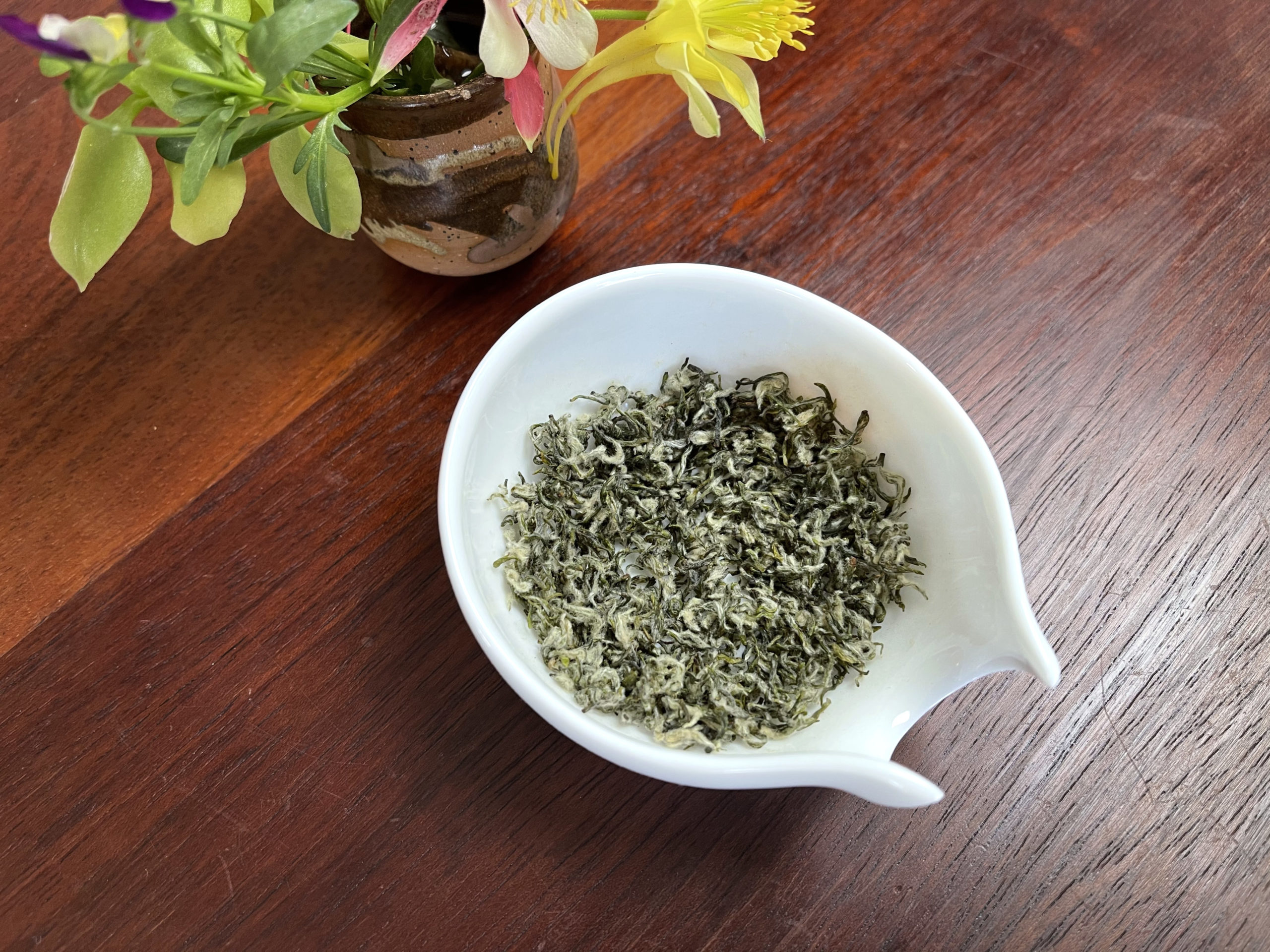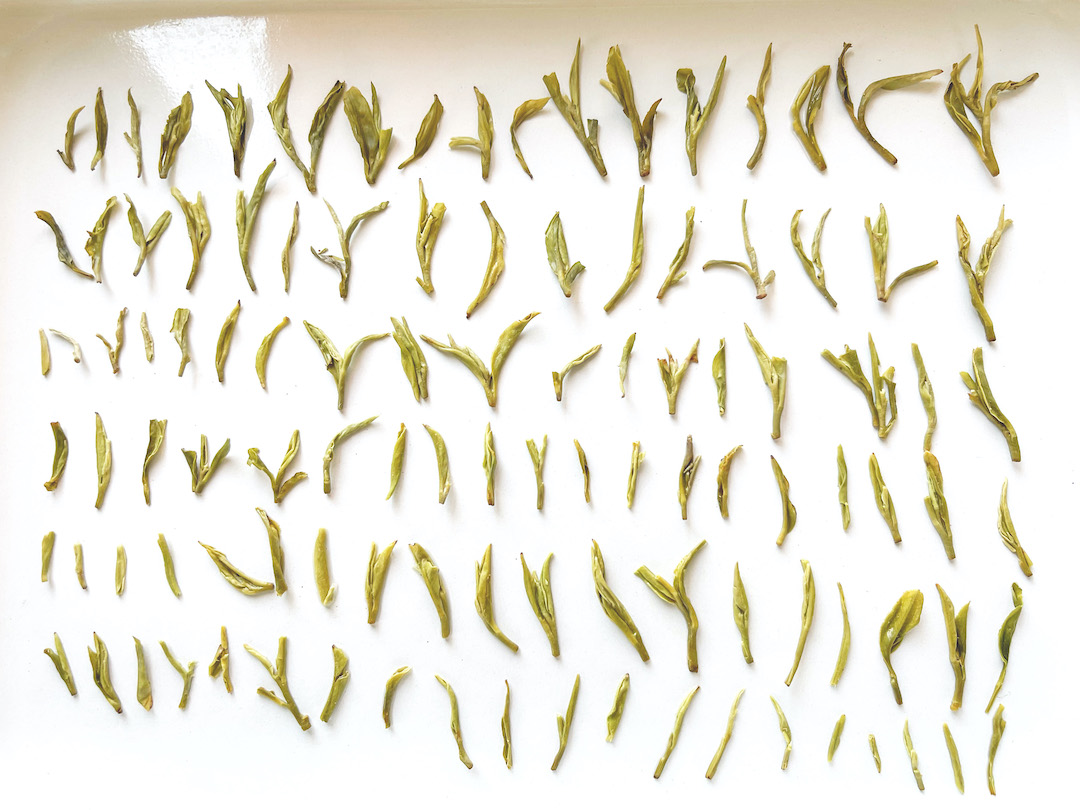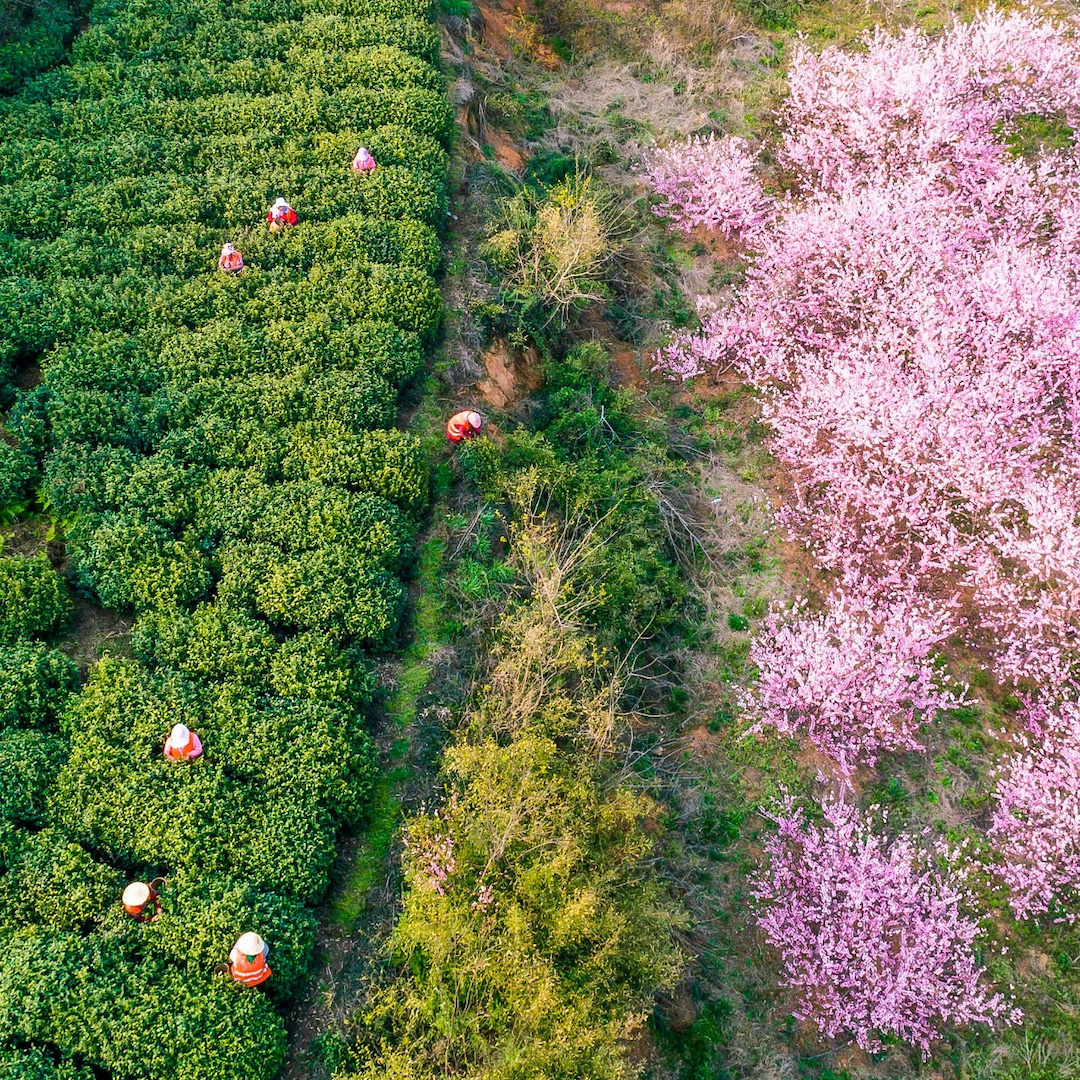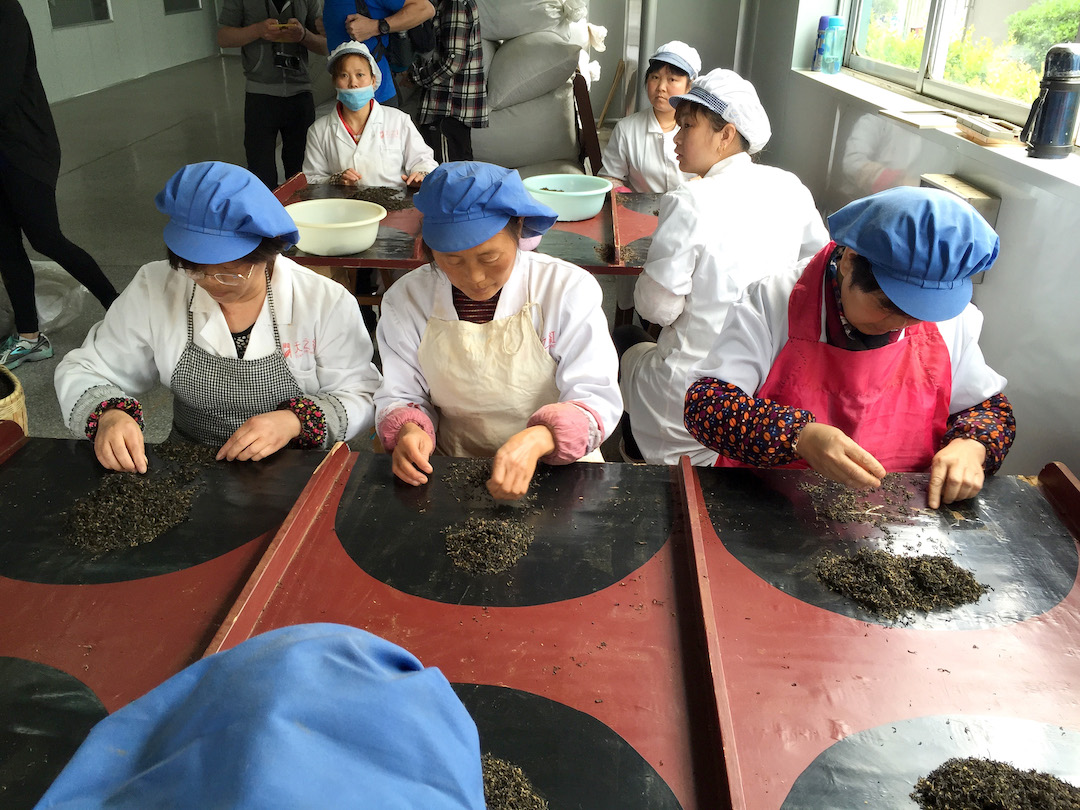Handmade Bi Luo Chun is Potent and Fragile

Let’s talk about small leaves, specifically those of Bi Luo Chun green tea and Qimen Caixia black tea.
Have you ever counted the tea leaves in your cup? Do that for Bi Luo Chun and you’ll find nearly 100 bud-and-leaf sprigs in a single gram. That’s 100 times someone (tea maker Lu Gengliang, his wife, their son, their apprentice, or their neighbors) plucked a tiny spring bud with a skillful snap.
The exceptionally small leaves of heirloom Bi Luo Chun requires one of the finest and most demanding plucking operations in the world, one done with precision in the dark, early-morning mist off Tai Lake.

The intense work of plucking is among the most serious challenges to the survival of traditional teas globally. As economies change, hand-plucking operations will change to mechanization, unless we are willing to pay more to those who do this work. There are fewer and fewer origins, like Bi Luo Chun’s Jingtingzhen, that can command a high enough price for their tea to compensate for the enormous labor that goes into the careful plucking alone – and that’s to say nothing of the hand sorting and hand processing that follows it.
There are many teas called “Bi Luo Chun” on the market, but there are very few like the authentic Xishan Bi Luo Chun left. We feel privileged to be able to have this tea in our catalog, and doubly privileged to live at a time where it can be flown across an ocean just weeks after its harvest.

It’s tempting to think of old and famous teas like Bi Luo Chun as archaic fixtures, unchanging and uniform, while in fact they are outcomes of changing and complex systems, works of serendipity and circumstance, fragile, beautiful, and fleeting. Each year this tea exists is a rare moment. It’s one that begs for appreciation while we have it.
How does it taste? Fresh Bi Luo Chun is a mix of bright, cool, and sweet sensations, reminiscent of orchids, the delicate toast of roast chestnut, and hints of the tree fruits this tea was grown next to. While their flavor is delicate, the energetic perk of these tiny leaves hits surprisingly strong.
We selected Qimen Caixia as a natural pair with this tea, one also made with skillful hand-plucking of small-leaf heirloom plants, but in this case it’s a black tea.
Qimen is one of the few origins that’s long taken the risk of using their valuable early spring pluckings to make black tea. Until recently, black tea made with young spring buds and leaves like Sunrise Keemun was almost unheard of. The long-standing skill of black tea makers in Qimen is extraordinarily important. Even the most carefully plucked, perfectly grown tea won’t reach its potential without tea makers who know how to process it well.
As we raise our glasses of hundreds of leaves, we’ll do it with appreciation to the rare people and circumstances that got them here as they are. Cheers!

